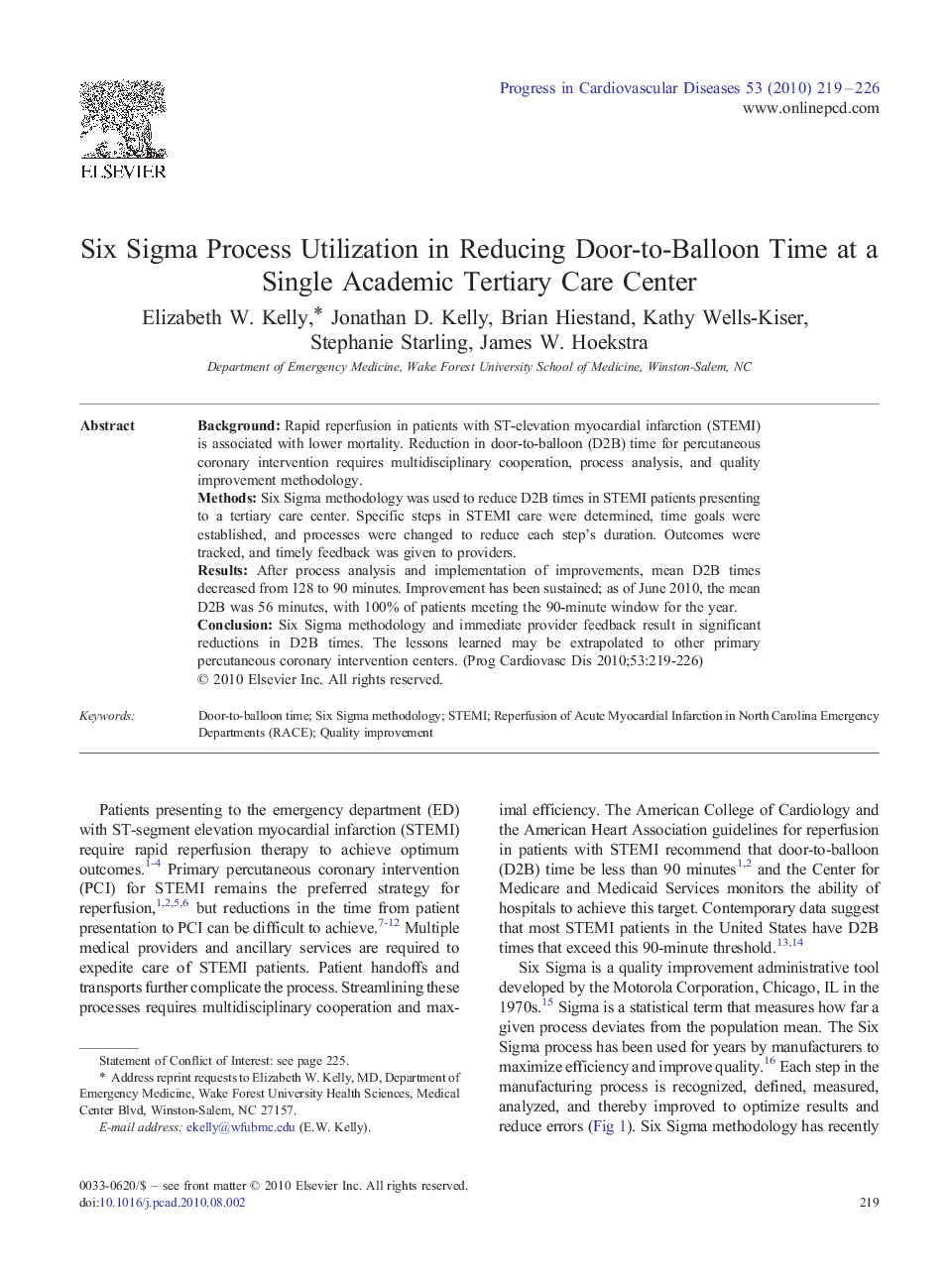| Article ID | Journal | Published Year | Pages | File Type |
|---|---|---|---|---|
| 3006848 | Progress in Cardiovascular Diseases | 2010 | 8 Pages |
BackgroundRapid reperfusion in patients with ST-elevation myocardial infarction (STEMI) is associated with lower mortality. Reduction in door-to-balloon (D2B) time for percutaneous coronary intervention requires multidisciplinary cooperation, process analysis, and quality improvement methodology.MethodsSix Sigma methodology was used to reduce D2B times in STEMI patients presenting to a tertiary care center. Specific steps in STEMI care were determined, time goals were established, and processes were changed to reduce each step's duration. Outcomes were tracked, and timely feedback was given to providers.ResultsAfter process analysis and implementation of improvements, mean D2B times decreased from 128 to 90 minutes. Improvement has been sustained; as of June 2010, the mean D2B was 56 minutes, with 100% of patients meeting the 90-minute window for the year.ConclusionSix Sigma methodology and immediate provider feedback result in significant reductions in D2B times. The lessons learned may be extrapolated to other primary percutaneous coronary intervention centers.
